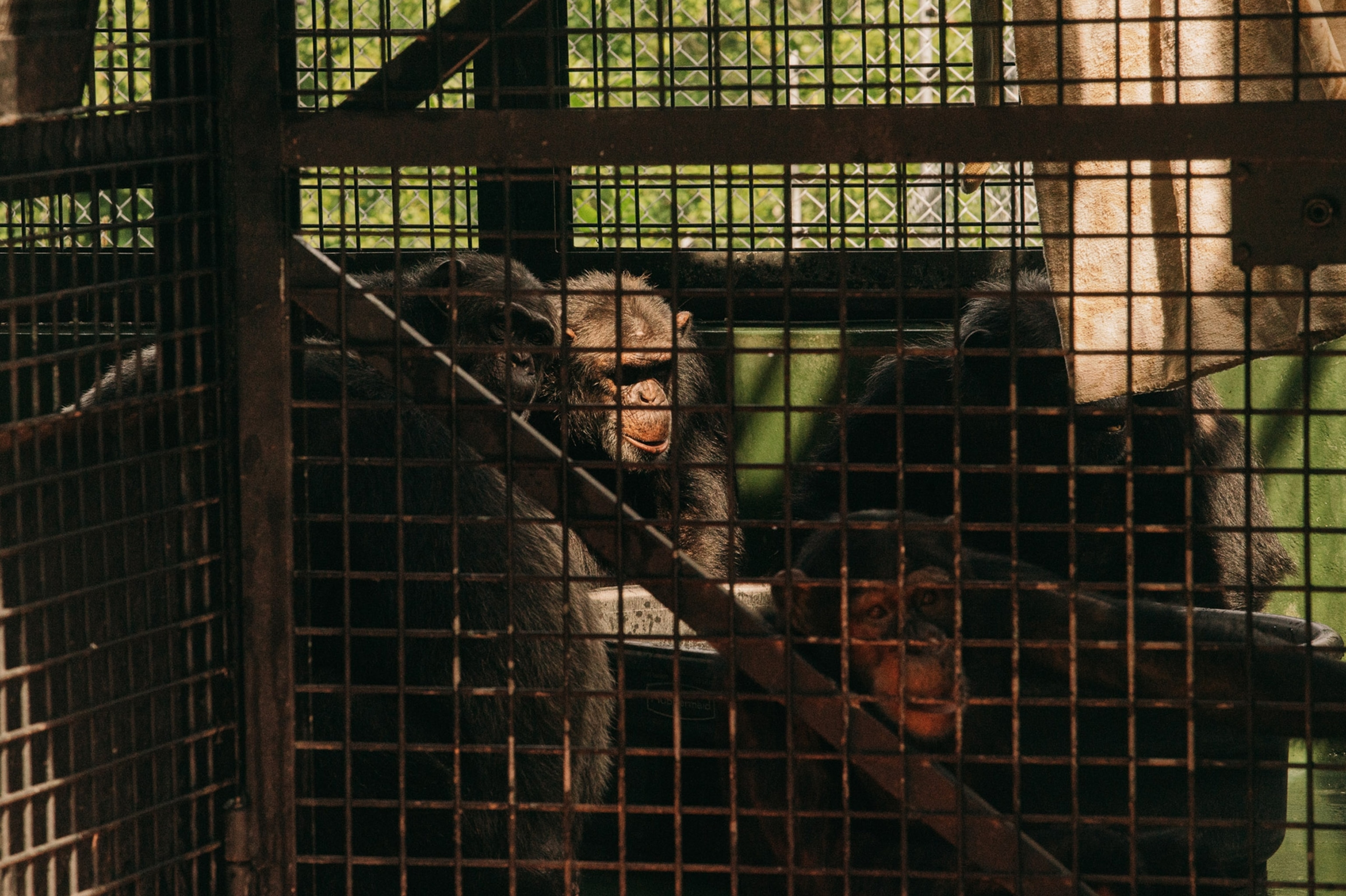
A true sanctuary for chimps?
By Rachael Bale, ANIMALS Executive Editor
Over the past decade, the “retirement” of chimpanzees from labs has filled sanctuaries across the country. Once used in medical research, the chimps would be able to live out their lives in relative comfort and freedom. But since then, there has been a lot of debate over what qualifies as proper chimp care, according to chimpanzee expert Steve Ross at Chicago’s Lincoln Park Zoo.
The debate recently boiled over at Project Chimps, a sanctuary in Georgia with 78 chimps, when former employees and volunteers began speaking out about their concerns that the chimps weren’t getting proper veterinary care, enrichment, and housing—claims the sanctuary vehemently denies. One debate is over how much time chimps (pictured above) get in an open-air habitat.
Nat Geo reporter Rachel Fobar spent six months investigating. She spoke to dozens of current and former staff, volunteers, and interns, as well as outside experts, and she visited the sanctuary twice. (Read what she found here.) While she was working on the story, Project Chimps filed a defamation lawsuit against two of its most outspoken critics, saying they’d “embarked on a campaign to smear” the sanctuary.
This very public controversy highlights the challenges of caring for these highly intelligent animals in a captive setting. They require complex enrichment activities to keep their brains occupied and bodies healthy, for example, and because they’re so smart and strong, they can get loose and pose a danger to humans if they’re not in extra-secure enclosures.
“People on both sides agree that chimps aren’t meant to be in captivity,” Fobar told me. But these chimps are, “so then the question then becomes: What can sanctuaries do to provide the best possible care?”
Do you get this newsletter daily? If not, sign up here or forward to a friend.
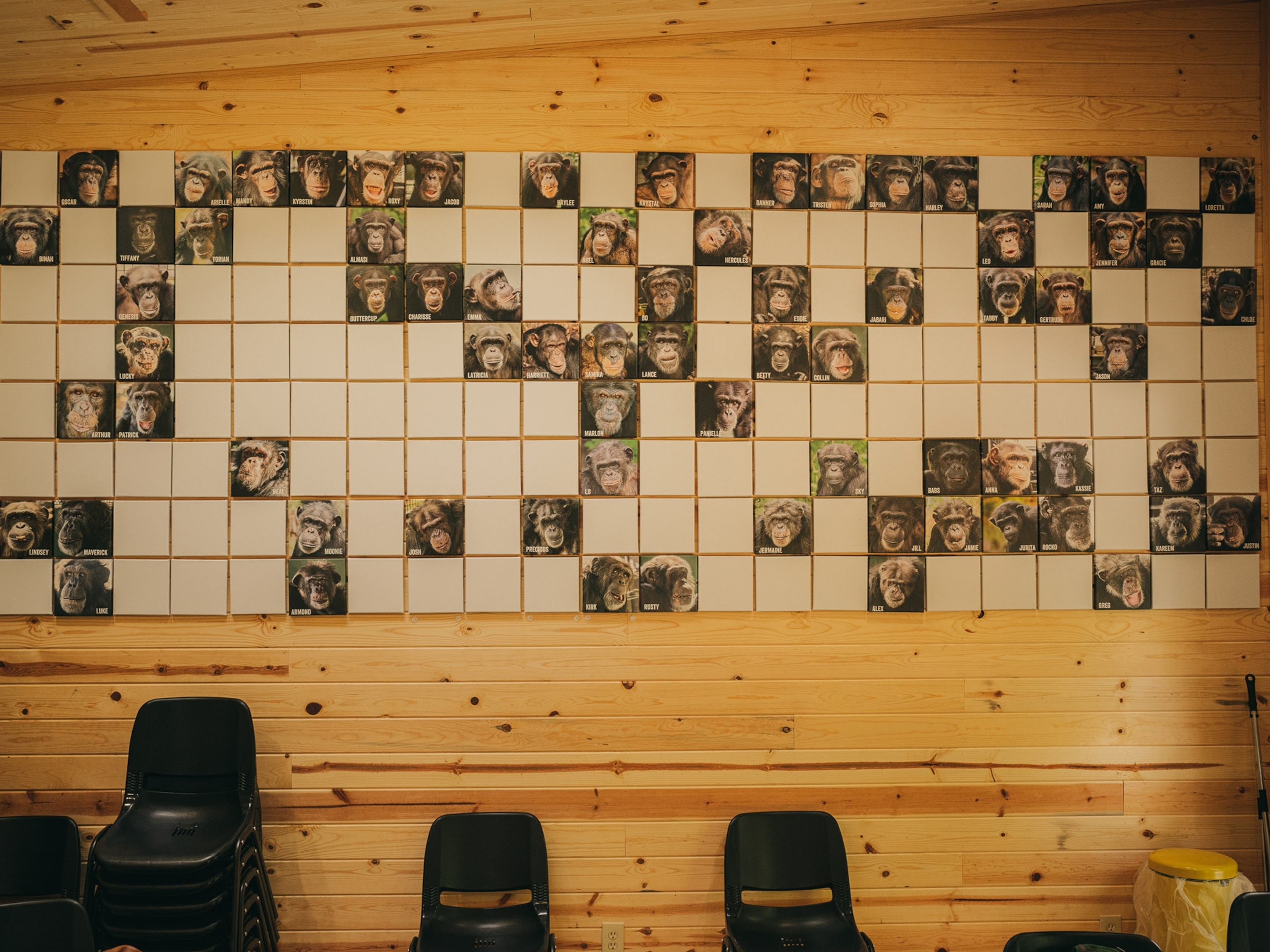
Your Instagram photo of the day
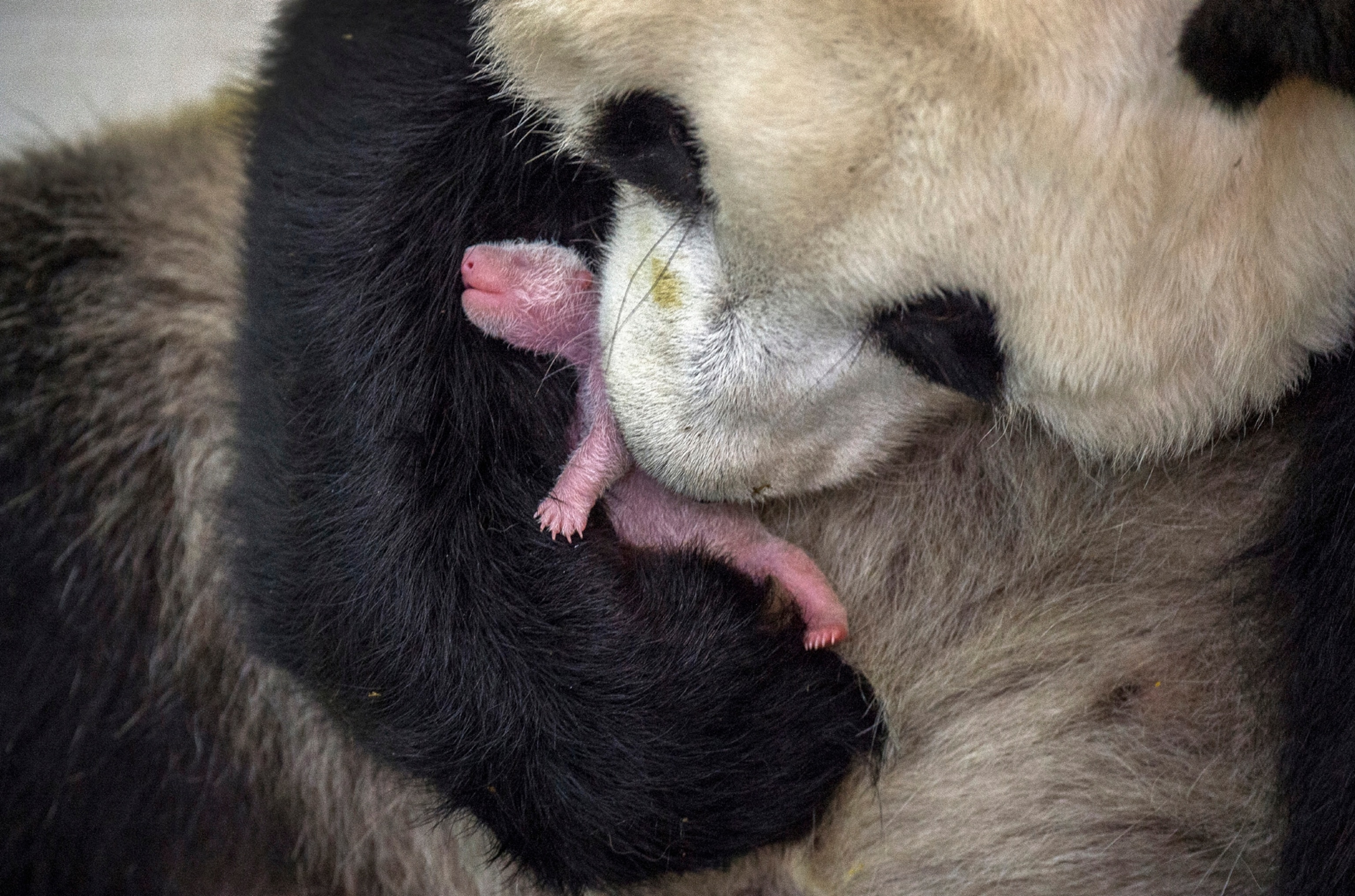
Little one: Photographer Ami Vitale captured this image of a baby panda, birthed by seven-year-old giant panda Min Min at Bifengxia Giant Panda Breeding and Research Center in Sichuan Province, China. It was three long days and nights of waiting for her to give birth, and the vets thought it was likely to be a stillbirth, Vitale tells us of the birth in 2015. “Much to our delight, a very healthy giant panda cub emerged with a loud scream. She was the largest cub born that year, and first-time mother Min Min proved to be an excellent mother,” says Vitale, author of Panda Love. “Giant pandas are born tiny, blind, and helpless. The limbs of newborn pandas are so weak that they are not able to stand, and for the first two months baby pandas only nurse, sleep, and poo. They are weaned between eight or nine months and a year old.” Note: Vitale has had to get into disguise to photograph the pandas.
Subscriber exclusive: Pandas get to know their wild side
Are you one of our 140 million Instagram followers? (If not, follow us now.)
Today in a minute
What’s killing Botswana’s elephants? They walk in circles and appear dizzy before suddenly dropping dead, sometimes face-first. Hundreds of them. Nat Geo’sDina Fine Maron explores the suspects: ingestion of toxic bacteria in water, anthrax poisoning, poisoning by humans, and a killer microbe. Also possible: viral infection from rodents, which killed off more than 60 elephants in South Africa in the early 1990s. “Sudden death preceded by neurological symptoms would be consistent with this rodent-borne virus, which causes heart failure,” she writes.
Feline hitchhikers: Researchers say ancestors of the domesticated house cat tagged along with Neolithic farmers who migrated from the Fertile Crescent to modern-day Poland. That’s the conclusion from a study that found the first known skeletal remains of Near Eastern wildcats in four Polish caves near 6,000-year-old farming settlements. “The feline’s presence suggests it was comfortable living alongside, if not exactly with, humans—an important step on the road to becoming fully domesticated,” Virginia Morell writes for Nat Geo.
Deadly: Poaching in Uganda is on the rise, with people using cheap wire snares and deadly steel traps to try to catch animals to sell or eat. Antelopes and boars are the usual targets, but giraffes, lions, and other animals also accidentally get caught. Authorities believe thousands of these devices have been hidden in national parks since the mid-March shutdown for the pandemic. “The sudden loss of visitors in the parks, where their presence helps deter poachers, has hampered ranger operations,” Dina Fine Maron reports.
An unlikely ally in the fight against STDs: Koalas? Really? They may be key to studying chlamydia, one of the world’s most persistent diseases. The bacteria causing chlamydia in humans is close to that infecting koalas, leading to severe inflammation, massive cysts, scarring of the reproductive tract of the animal, and sometimes infertility. “The koala is more than just a fancy animal model,” microbiologist Peter Timms told the New York Times. “It actually is really useful for human studies."
The big takeaway
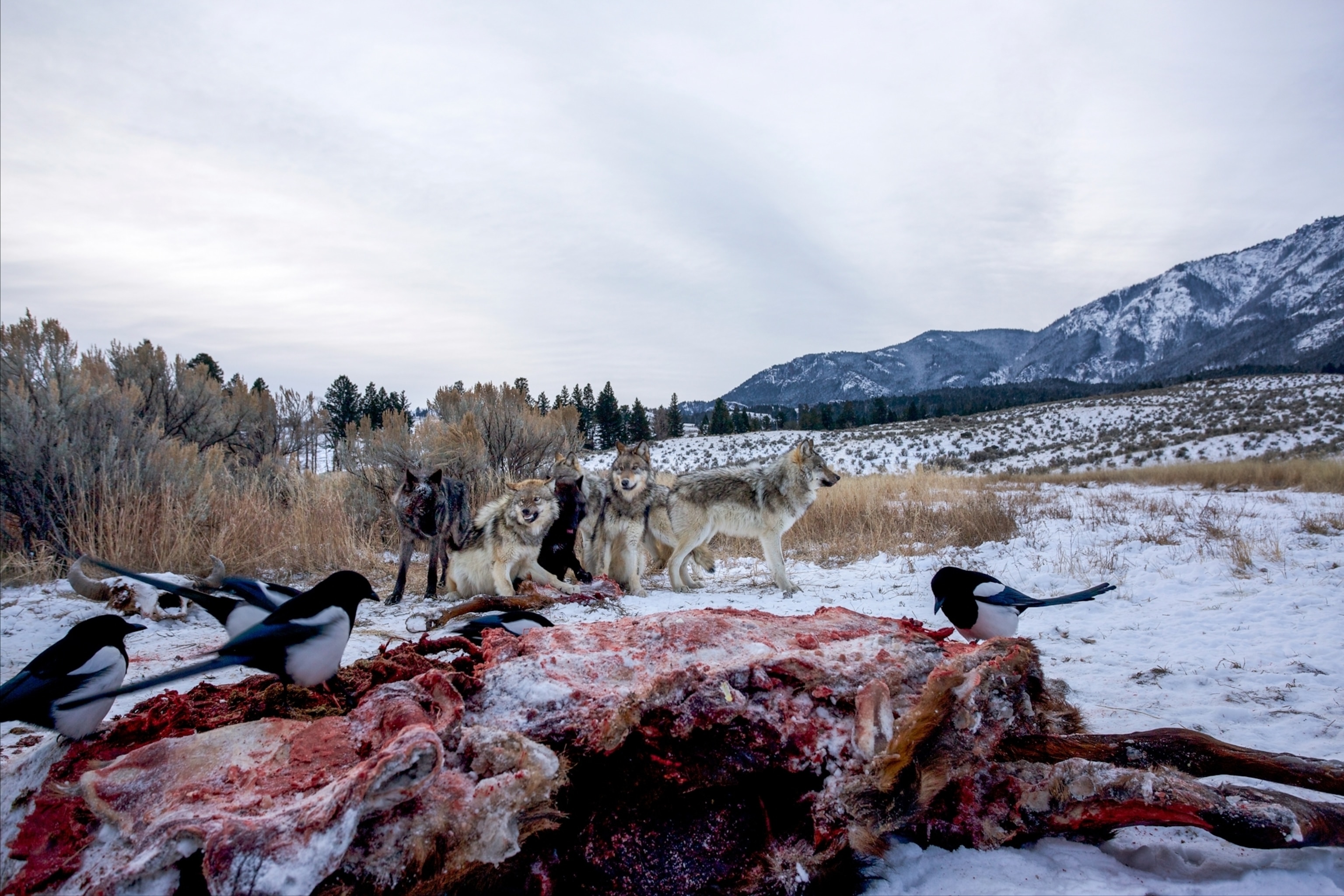
Good news from Yellowstone: Wolves reintroduced 25 years ago have had a positive effect on the ecosystem, researchers say. One example are elk herds, which are becoming stronger and more resilient because wolves are culling the weaker members, Christine Peterson writes for Nat Geo. That’s the goal, says Doug Smith, Yellowstone’s senior wildlife biologist. Because weather in the future will be very unpredictable, “we want a buffer” against mass die-offs, Smith says. Pictured above, wolves and black-billed magpies scavenge at a dump where carcasses are stored in Yellowstone National Park.
Overheard at Nat Geo
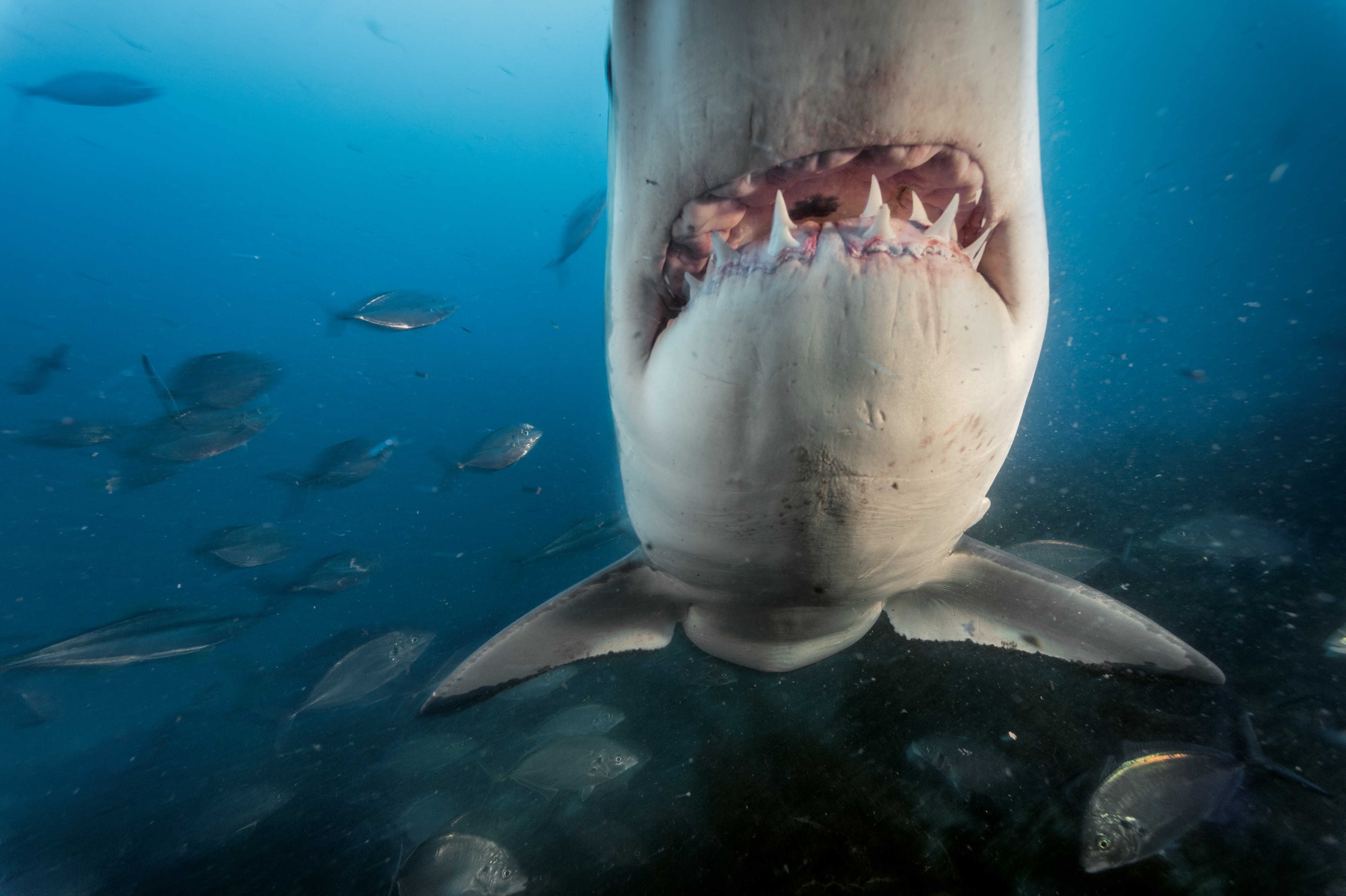
Why track the biggest sharks? Not to tell their individual stories, but to answer the many questions scientists still have, Jason Bittel writes for Nat Geo. A large great white shark could help reveal “where great white sharks mate, where they gestate, and where they give birth,” says Chris Fischer, whose Ocearch organization has tagged some of the biggest sharks on Earth. Pictured above, a great white shark checking out a caged diver off Australia.
Not enough sharks? Check out videos, articles and more at natgeo.com/Sharkfest and tune in to the launch of SharkFest this Sunday at 8/7c on National Geographic.
In a few words
We're the ones who are dangerous. It's not that sharks are without dangers, but if you want to say who poses the greater threat between the two, there's no doubt it's humans.Juliet Eilperin, Author of Demon Fish: Travels Through the Hidden World of Sharks; From: It’s the sharks that should be afraid of humans
Did a friend forward this to you?
Come back tomorrow for Whitney Johnson on the latest in photography news. If you’re not a subscriber, sign up here to also get Debra Adams Simmons on history, George Stone on travel, and Victoria Jaggard on science.
The last glimpse
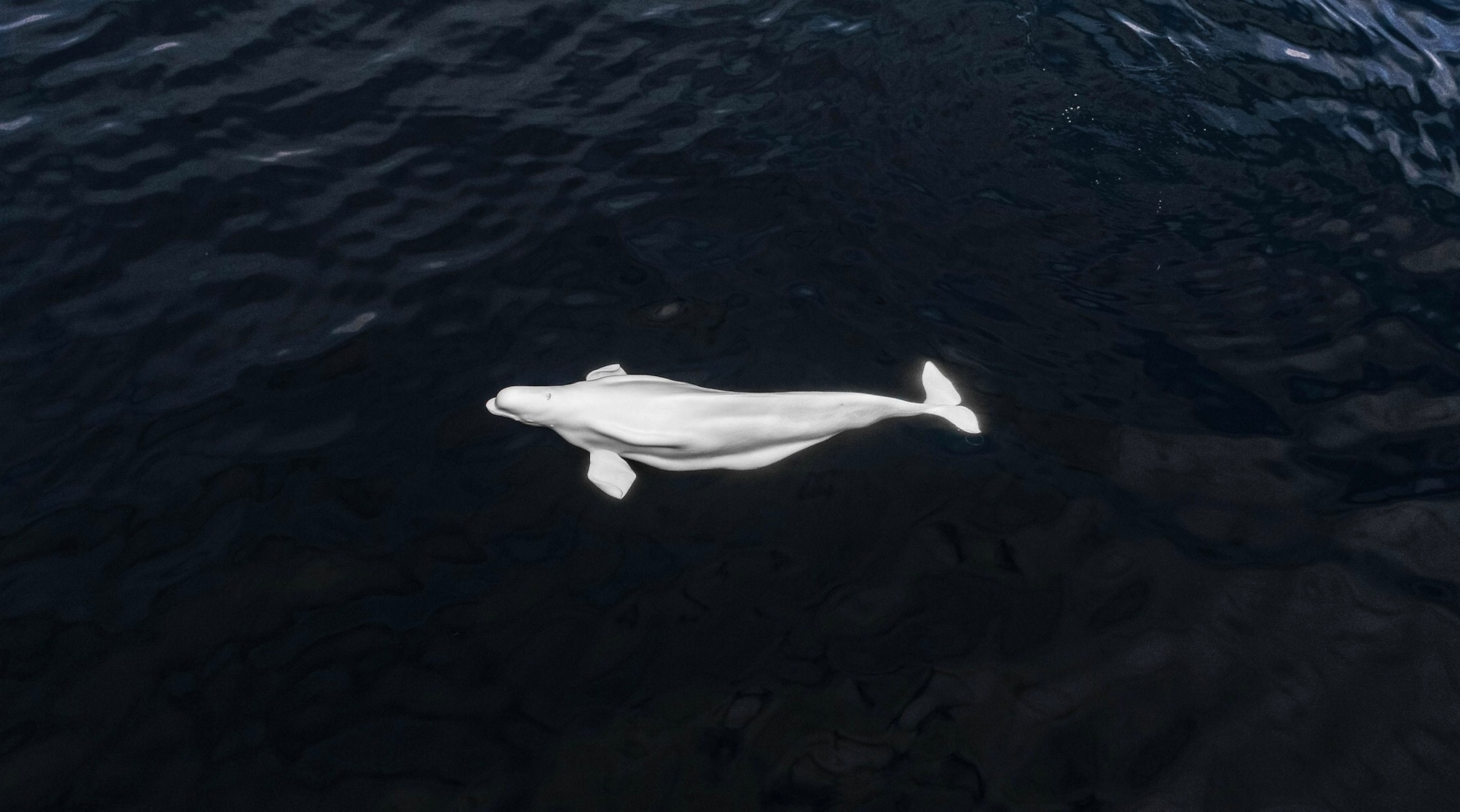
So many questions: What’s a beluga whale doing swimming off San Diego? How come the beluga is all alone? This beluga, captured by a drone video, is the farthest south this species has ever been officially recorded, Jason G. Goldman writes for Nat Geo. The beluga appeared to be in good conditions, and there have been unconfirmed later sightings farther north, off the Channel Islands, near Los Angeles. Scientists are baffled. “I'd like to think that it's on a grand adventure,” says Alisa Schulman-Janiger, a research associate at the Natural History Museum of Los Angeles.